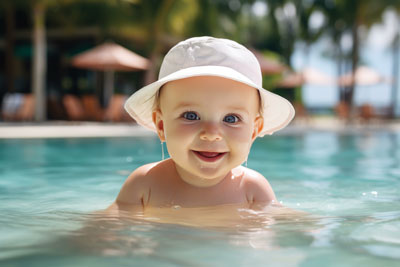
Planning your baby’s first summer holiday? Whether you’re off to the coast, heading abroad or just hoping for some sunshine and splash time closer to home, it’s only natural to have a few nerves when water’s involved.
From hotel pools to beaches and even splash parks, these are all new environments – and for babies, they can be a bit much if they’re not used to them. The good news is there’s lots you can do before you even leave home to help your baby feel more confident in and around water.
Here, Tamsin Brewis from Water Babies, shares her top tips to help your family enjoy a calmer, more relaxed first summer of water play – wherever you’re headed.
1. Try regular water play at home
You don’t need to wait until you’re on holiday to get your baby used to being in water. A few minutes of fun in the bath or even in a shallow washing-up bowl with warm water and their favourite toy can make a real difference. Splash water over their arms and legs, gently pour it over their shoulders and let them feel the water running down their skin. These simple activities help your baby get used to water movement and temperature changes – all of which they’ll experience when they are at the beach or in a pool.
2. Get them used to their ‘swimming kit’
Babies aren’t always thrilled the first time you pop a sunhat on their head or try a swim nappy. So, it’s worth letting them wear these items for short periods before your trip. Try letting them wear their swimwear in the bath or garden and have a few short ‘practise’ sessions with their hat on indoors while they play. That way, you’re not adding new sensations to an already unfamiliar environment when you’re on holiday.
3. Treat water time as exploration, not a task
When you arrive at the pool or beach, go at your baby’s pace. Sit by the water’s edge and let them watch and listen. If they’re feeling brave, dip their toes in, then gradually their legs and hands. Hold them close and talk to them softly so they know you’re there and they’re safe. The aim isn’t to ‘get them in’ or have them swim – it’s just about helping them feel comfortable with this new space.
4. If they’re unsure, stay calm and responsive
If your baby seems unsettled or cries when you try to introduce them to water, don’t worry – it doesn’t mean you’ve done anything wrong. Step back, have a cuddle and try again later or another day. Your calm reassurance tells them it’s OK to take things slowly. Babies are sensitive to your emotions – so staying positive and relaxed helps them do the same, even if things don’t go to plan right away.
5. Build in quiet, connected moments
Being in water together – whether it’s a pool, sea or bath – is a lovely opportunity for bonding. Hold your baby close, maintain eye contact, and talk or sing to them while you float or sit in shallow water. These peaceful moments help your baby associate water with safety and closeness. And for you, it’s a chance to slow down and enjoy the moment – which isn’t always easy on a busy family holiday.
6. Prepare with gentle swim sessions
If you’ve got a holiday coming up, booking a few baby swimming sessions beforehand can help give you both a head start. At Water Babies, we focus on building confidence through trust – not pressure. Our lessons are designed to help babies feel comfortable in the water and to give parents the tools to support them safely. Even a short series of lessons can make a big difference when it comes to enjoying water time on holiday.
With a little bit of preparation, your baby’s first summer around water can be full of happy memories – not just for them, but for you too. Whether it’s dipping tiny toes in the sea, sharing a splash in the pool or simply cooling off in the garden, building their confidence early means you can both relax and enjoy the moment when it counts.
For more information about Water Babies please visit www.waterbabies.co.uk


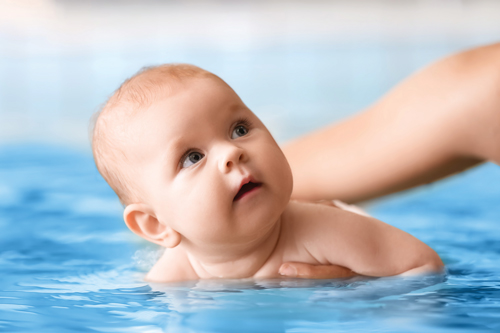

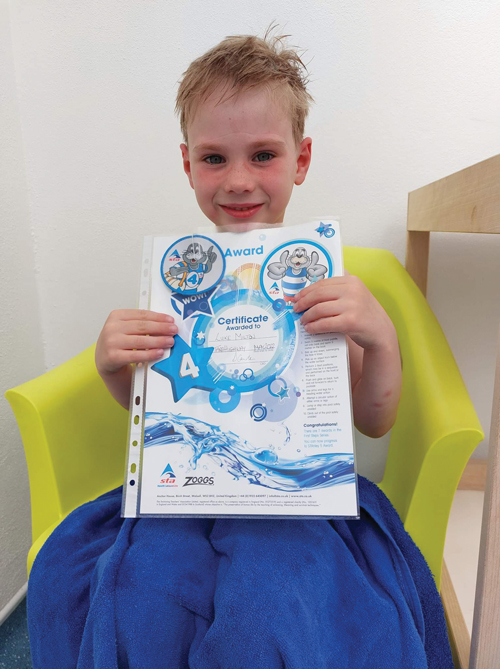
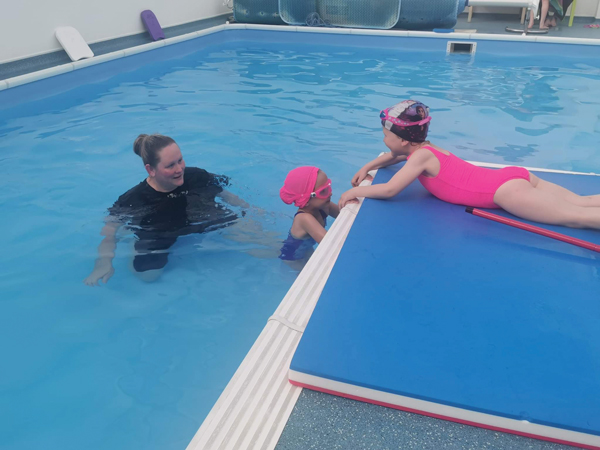
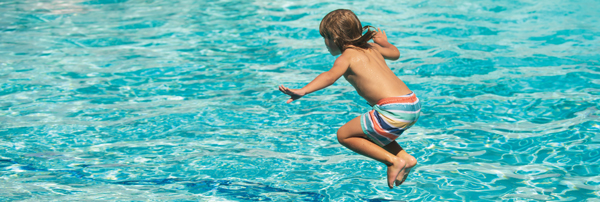

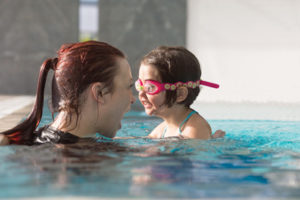 3. Swimming is a mood booster
3. Swimming is a mood booster 4. Swimming can make your child smarter
4. Swimming can make your child smarter









